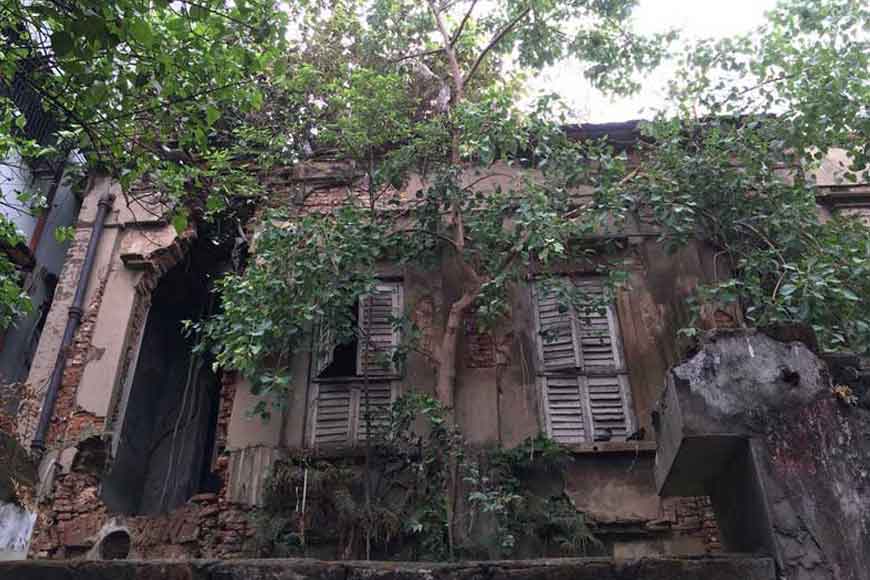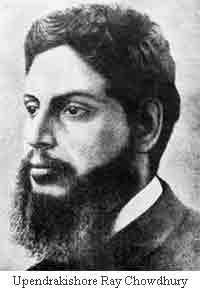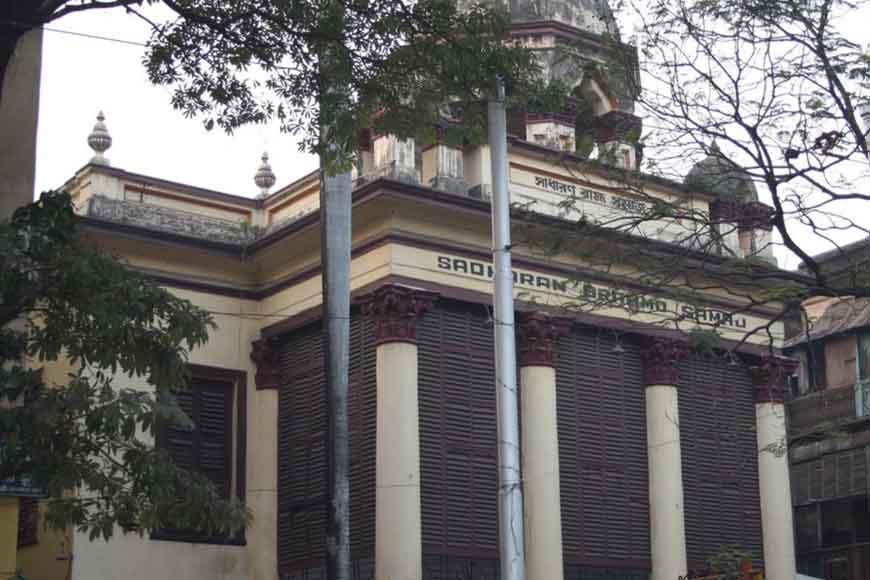Abala Barrack: A house that epitomizes Bengal’s glorious past

13, Cornwallis Street
Though Upendrakishore Ray Chowdhury, great grandfather of Satyajit Ray and one of the prolific children’s authors of Bengal was born in Mymensingh district, he was educated in Calcutta. While in his graduation days from Presidency College in 1884, he possibly joined the Sadharon Brahmi Samaj and became close to Dwarakanath Gangopadhyay. In 1885, he married Dwarakanath Gangopadhyay’s daughter, Bidhumukhi.
 Upendrakishore’s wedding ceremony was probably held in Dwarakanath’s house in the Sadharon Brahmo Samaj locality. After the wedding, Dwarakanath and his wife shifted to House No. 13 on Cornwallis Street and settled on the second floor. It was around the same time that Upendrakishore and his newly-wedded wife shifted to the second floor of the same house with Upendrakishore’s physically challenged, perpetually ill youngest sibling, Satish. Dwarakanath Gangopadhyay edited a magazine named Abala-Bandhav and worked tirelessly for the women’s emancipation and fought to establish their rights in the society. His work was mostly misunderstood by the hoi-polloi who termed him ‘Abala-bandhav’, a friend of the female tribe.
Upendrakishore’s wedding ceremony was probably held in Dwarakanath’s house in the Sadharon Brahmo Samaj locality. After the wedding, Dwarakanath and his wife shifted to House No. 13 on Cornwallis Street and settled on the second floor. It was around the same time that Upendrakishore and his newly-wedded wife shifted to the second floor of the same house with Upendrakishore’s physically challenged, perpetually ill youngest sibling, Satish. Dwarakanath Gangopadhyay edited a magazine named Abala-Bandhav and worked tirelessly for the women’s emancipation and fought to establish their rights in the society. His work was mostly misunderstood by the hoi-polloi who termed him ‘Abala-bandhav’, a friend of the female tribe.
Dwarakanath Gangopadhyay edited a magazine named Abala-Bandhav and worked tirelessly for the women’s emancipation and fought to establish their rights in the society.
Since he lived in 13, Cornwallis Street, people termed the house ‘Abala Barrack.’ There’s a background to coining this term. After Dwarakanath converted to Brahmo religion, he was turned out of his ancestral house by his father and stripped of all property rights that he had inherited or owned. His father was a conservative Hindu and practiced all rites and rituals with utmost fervor. He could not accept his son hobnobbing with Brahmo Samaj followers. Stripped of all worldly belongings, Dwarakanath left home and took refuge in this house and commoners never missed any opportunity to insult him.
In the same house, on the first floor, next to Upendrakishore’s rooms lived Sanskrit Pundit Ramkumar Bhattacharya Vidyaratna. He was an erudite man who propagated the ideals and tenets of Sadharon Brahmo Samaj. He also authored a book, Kuli-Kahini. Very few people know that Ramkumar Bhattacharya Vidyaratna was Michael Madhusudan Dutt’s teacher and taught him Sanskrit. Michael Madhusudan was at that time staying in Uttarpara as Jayakrishna Mukherjee’s guest, in the first floor of Uttarpara Library, set up by Mukherjee. Madhusudan was very ill at that time and was vomiting blood frequently. His doctor and friends, all requested him constantly to stop drinking alcohol. One day his teacher Pundit Ramkumar Vidyaratna went to visit him from Calcutta. That was in the beginning of 1873. When Vidyaratna observed Michael’s condition, he too, asked him to leave alcohol. When Michael heard this, he said, “Pundit, I really love you. Please don’t ever say that to me again. If you do, I shall stop all relationship with you.” Vidyaratna was stunned and remained silent.
Also read : House Number 13 on Cornwallis Street
 Sadharon Brahmi Samaj
Sadharon Brahmi Samaj
In the same house, on the first floor, next to Upendrakishore’s rooms lived Sanskrit Pundit Ramkumar Bhattacharya Vidyaratna. He was an erudite man who propagated the ideals and tenets of Sadharon Brahmo Samaj. He also authored a book, Kuli-Kahini.
Pundit Ramkumar Vidyaratna was a vagabond and led a nomadic life. He married Gnyanada Devi, daughter of the famous Tantrik practitioner, Achalananda Paramhansa of Kotaranga. Her Tantrik father forced her to stay back after marriage and would not let her go with her husband and set up her home because he was a member of Brahmo Samaj. One day, Ramkumar went to his in-laws’ house stealthily and absconded with his wife. They had three daughters – Sushama, Surama and Roma. Ramkumar’s wife died in 1888. At that time, his second daughter, Surama was three years old and Roma was just one year. His eldest daughter, Sushama, lived in the boarding house and studied in school. Ramkumar left his second daughter Surama under the guardianship of Upendrakishore and the youngest one, Roma with Shibnath Sastri and left home to become an ascetic monk. He took the new name of Swami Ramananda Bharati.
When Sushama grew up, she got married to Professor Surendranath Moitra. Upendrakishore brought up Surama (15-09-1885 to 21-08-1952) as one of his own daughters. After she grew up, he got her married to his youngest brother, Brahma Pramoda Ranjan and Leela Majumdar, the renowned Bengali author, was their daughter. Shibnath Shastri brought up Roma (1887) and got her married to Upendramohan Sen.
Upendrakishore lived in this house for almost a decade till 1895. His five children were all born here -- his three daughters, Sukhalata, Punyalata and Shantilata and two sons, Sukumar Roy and Subinoy Roy. Upendrakishore’s business was expanding and he required more space. So, in 1895, he moved to a bigger house in the vicinity on Shibnarayan Das Lane.
(To be continued)










